The biggest brand lesson in Trump's taxes

Happy debate day. New Trump tax records obtained by the New York Times show the personal and business brand Donald Trump played up as a reality star was dishonest, and I wrote about how it fits in with a larger movement towards being more brand critical. Also in this week’s issue:
What you need to know about the presidential debate stage set
What the presidency would be like if an artist was president
The 2020 Design for Democracy posters are here
Yours,
P.S. Watch the debate with me! I’ll be tweeting tonight if you want tojoin along.
The biggest brand lesson in Trump’s taxes
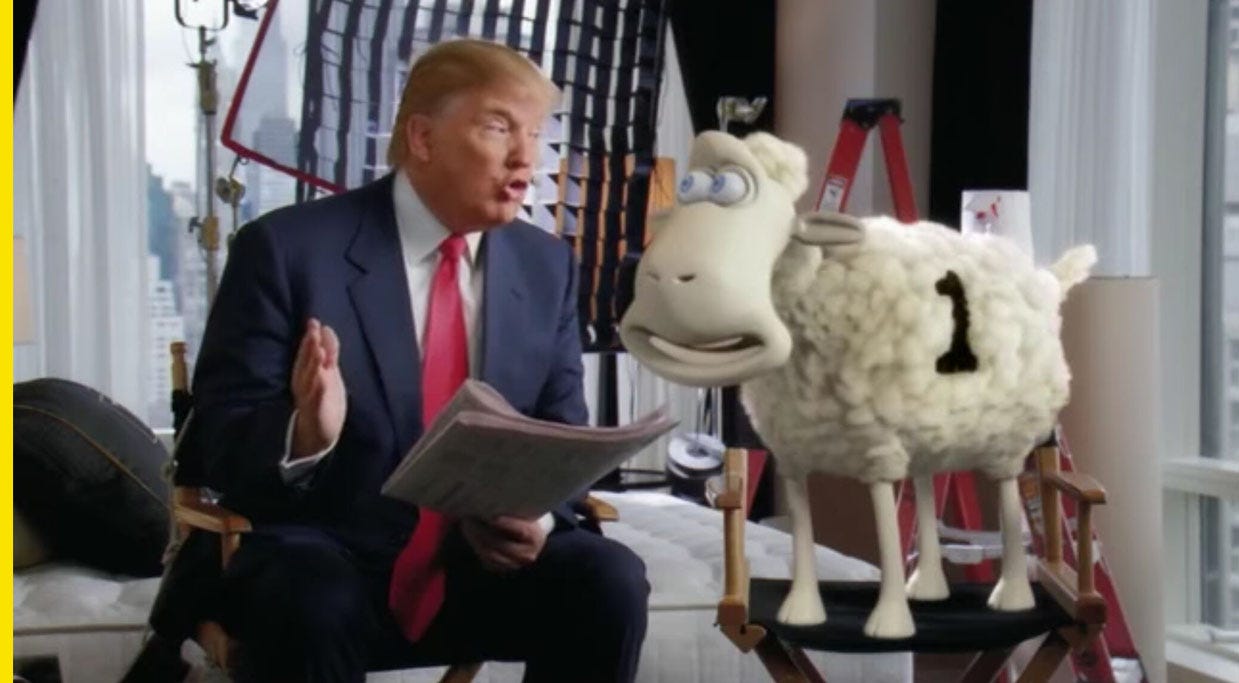
Trump in a commercial for the Serta mattress company.
“The Apprentice” jumpstarted Donald Trump’s celebrity and brand, but according to decades of tax documents obtained by the New York Times, the public image Trump portrayed on the show as a savvy business magnate was a sham.
Although the news isn’t particularly surprising considering what we previously knew about Trump’s business record, it comes at a time when we’re growing more critical of brands. Companies that use purpose-driven marketing for issues like racial justice or the environment but don’t follow through with their actions get called out for it, and jumping on social issues like they’re trends can backfire, which companies like Microsoft and Pepsi have learned. “Authenticity” is one of the great brand buzzwords of our time and we’re especially conscious of the gap between what a brand says they are and what really happens behind the scenes. Trump’s taxes put him at the heart of that story when it comes to politics.
Trump said in the debut episode of “The Apprentice” that his company was bigger and stronger than ever, but months later, Trump filed an individual tax return that reported an $89.9 million net loss from his core businesses in 2003. While Trump’s fortunes would improve for a few years as he parlayed his elevated celebrity into lucrative licensing and endorsement deals, the money didn’t last.
Trump made about $197 million from “The Apprentice” over 16 years, according to the Times, and he brought in an additional $230 million from things like licensing, endorsements, speaking gigs, and partnerships with multilevel-marketing companies. Trump would go onto pour millions into building a golf course empire that would lose money, and his “Apprentice” revenue stream eventually dried up. The Times reported Trump paid just $750 in federal income taxes in both 2016 and 2017, and he paid nothing in 10 of the previous 15 years because he reported losing so much money. Trump now has hundreds of millions of dollars in debt set to come due.
When “The Apprentice” was first being conceived in 2002, Trump told an NBC executive, “Even if it doesn’t get ratings, it’s still going to be great for my brand.” It was great for Trump’s brand, but ultimately, the brand story didn’t match reality. As a television game show host, Trump used gold-plated logos while hemorrhaging money and avoiding taxes, and today as president he has star-spangled red, white, and blue logos even as he’s used the presidency to make money from special interests and foreign countries. It’s the opposite of America First and Drain the Swamp.
What you need to know about the presidential debate stage set
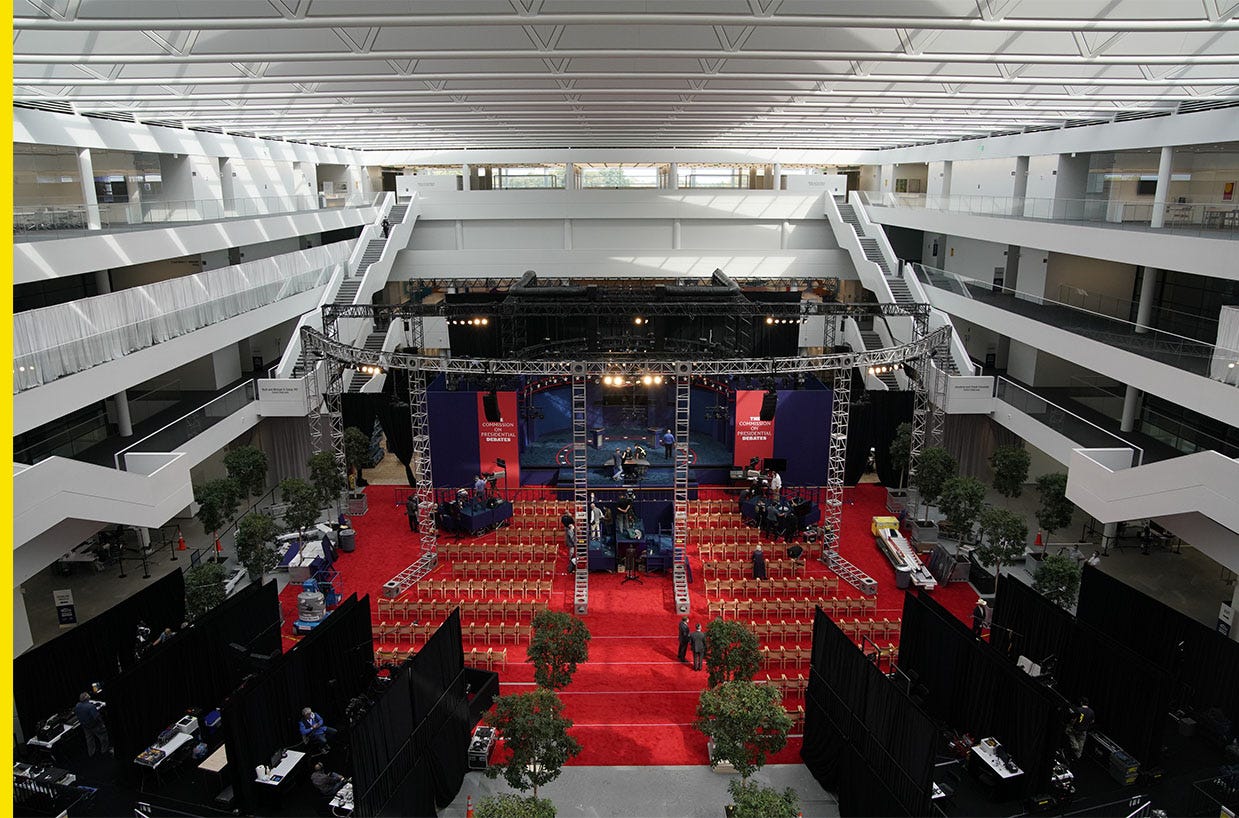
Workers prepare the stage ahead of the first U.S. presidential debate. Credit: Matthew Hatcher/Bloomberg via Getty Images
The stage is set for tonight’s debate between President Trump and former Vice President Biden at Case Western Reserve University in Cleveland, Ohio, and if you’ve watched a debate anytime in the past three decades, that stage looks pretty familiar.
Unlike primary debates, which are put on by cable networks, general election debates are organized by the nonprofit Commission on Presidential Debates, and it shows. Instead of bright, animated, backgrounds plastered in branding for the host network, the sets for general election debates are simple.
The set is intentionally designed to keep the visual focus on the candidate, moderator, or audience member who’s speaking, according to NewscastStudio, a trade publication for broadcast professionals. The debate commission has used a blue background for their sets for decades, with just a few details that have changed over the years.
In 2004, they added a horizontal header with stars to the backdrop, and in 2008, they added a background with the text of the Declaration of Independence behind the candidates. In 2016, they traded out bright red carpet for blue carpet.

Red vs. blue debate set carpet, from 2012 (top) and 2016 (bottom). Credit: C-SPAN
The presidential debate seal with the eagle in the center of the stage has appeared in debates since at least 1992, according to 60 Minutes correspondent John Dickerson. The eagle has arrows and olive branches in its talons, and unlike the eagle in the Great Seal of the United States which faces the olive branches representing peace, the debate eagle faces the arrows. No wonder debates can get so aggressive.
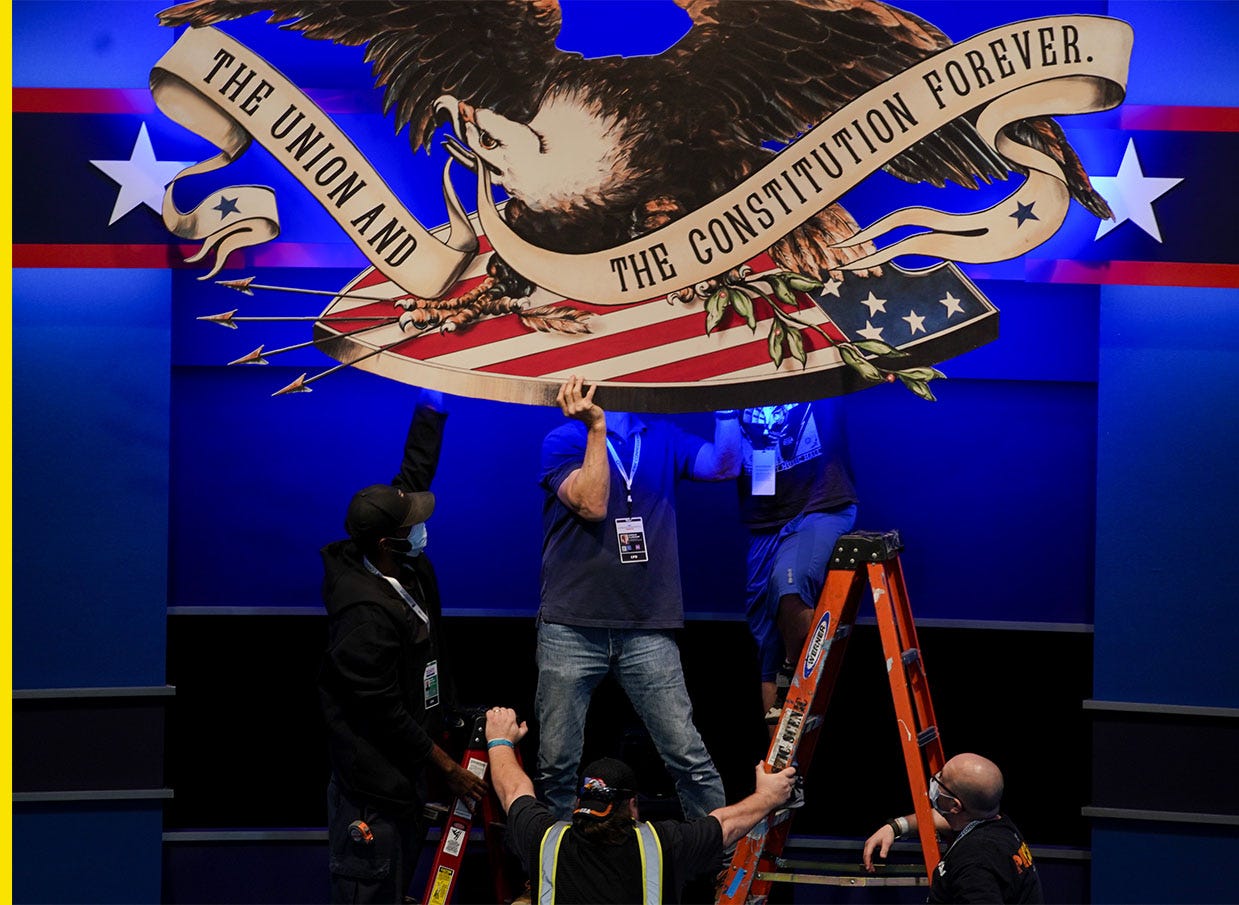
The debate seal is installed ahead of the first presidential debate. Credit: Matthew Hatcher/Bloomberg via Getty Images
The seal was based on a design the Commission found in the Smithsonian, they told Dickerson, but they didn’t have many details on it.

Campaign handkerchief for Garfield (left) and Harrison. Credit: Cornell University Library/Cornell University Library
Versions of the seal have appeared in American campaigns as early as the late 1800s, like in campaign handkerchiefs for James Garfield in 1880 and Benjamin Harrison in 1892.
Subscribe to Yello for the latest news on the culture, branding, and visual rhetoric of politics, delivered each week:
What the presidency would be like if an artist was president
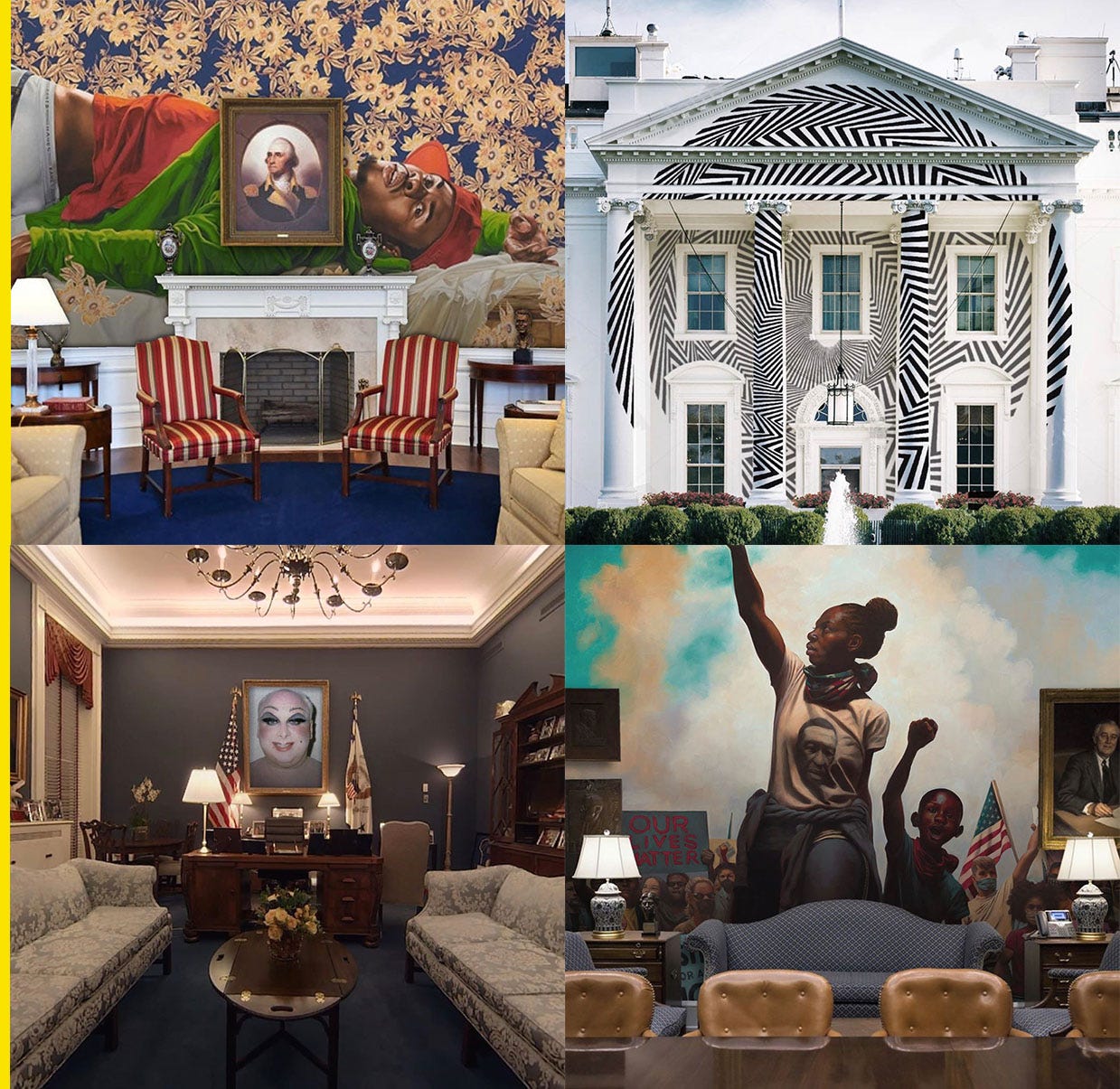
#redecoratingthewhitehouse art by Tyler Gunther. Credit: @artistsinpresdients/Instagram
A group of 50 artists are delivering addresses to the nation as if they were president as part of the new limited-run podcast called Artists in Presidents. The podcast is inspired by FDR’s fireside chats and it aims “to give our most radical imaginations the authority to speak as president,” per its site.
Featured artists will include Casey Spooner of the band Fischerspooner, and Mel Chin, whose Fundred Project uses art to raise awareness of lead contamination. Artist Tyler Gunther contributed a series of #redecoratingthewhitehouse images (above) that reimagine the White House as an ultra-contemporary art gallery, like the Oval Office with Kehinde Wiley wallpaper, Bridget Riley’s Blaze across the facade of the North Portico, a framed portrait of the drag queen Divine, and Kadir Nelson’s 2020 painting American Uprising in the Roosevelt Room.
Artists in Presidents is directed by artist Constance Hockaday in partnership with UCLA’s Center for the Art of Performance and Stanford Live Arts. New episodes are slated to be released weekly through November 13.
The 2020 Design for Democracy posters are here
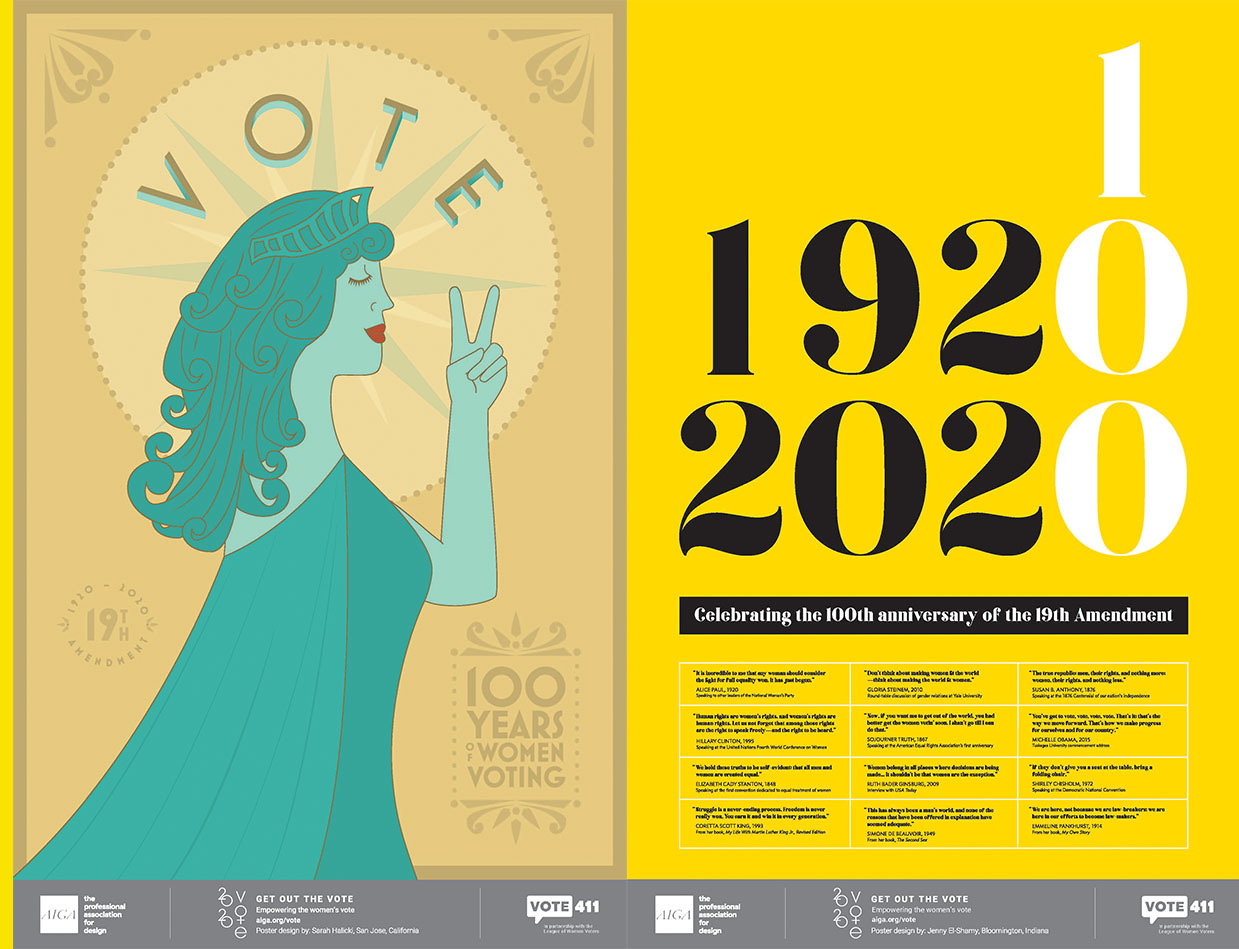
“V is for Voting” by Sarah Halicki and “Celebrating the 100th Anniversary of the 19th Amendment” by Jenny El-Shamy
AIGA, the professional association for design, is out with posters for this year’s Design for Democracy, its initiative started in 1998 to use design to drive civic participation.
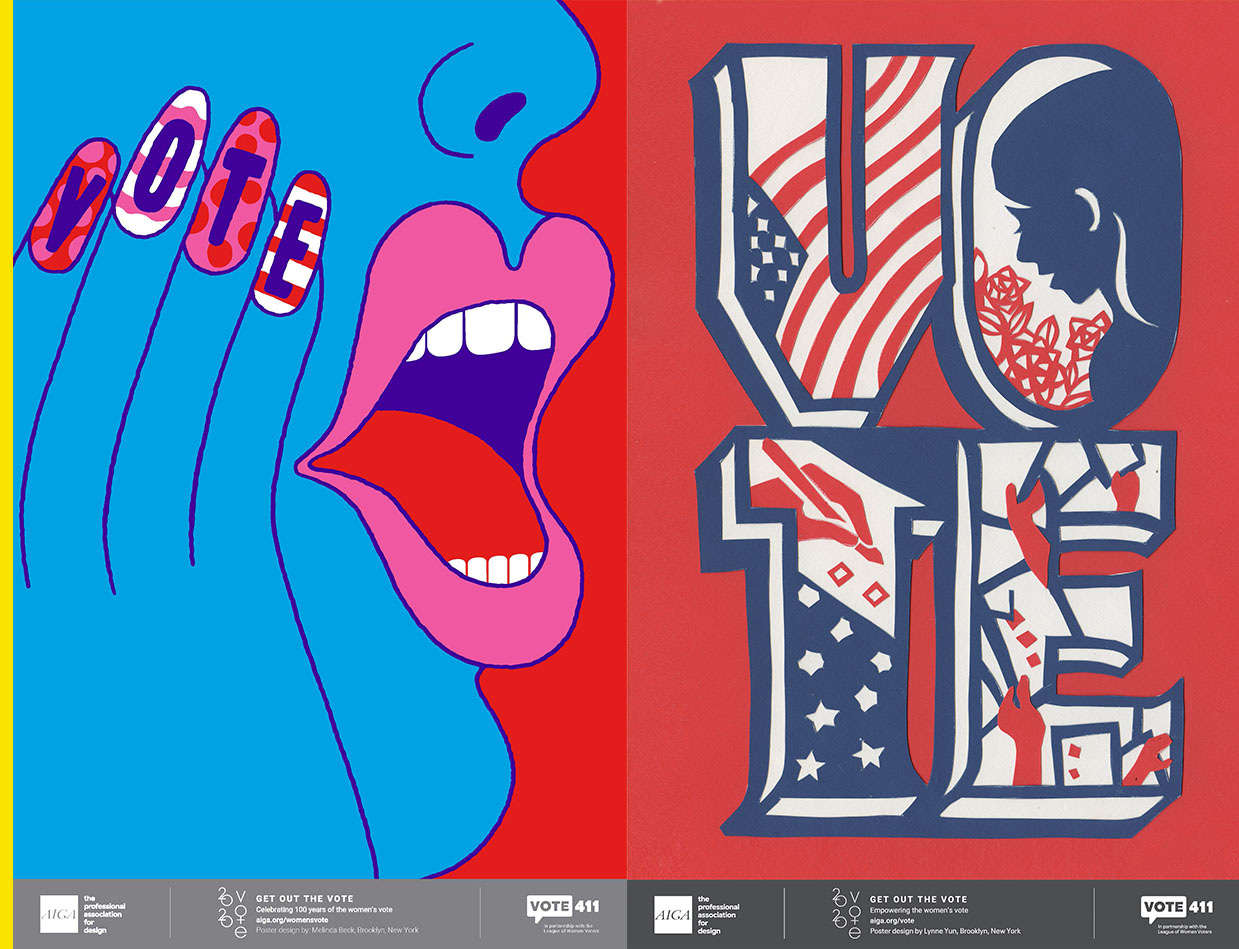
“Your Vote is Your Voice” by Melinda Beck and “Vote” by Lynne Yun
This year’s campaign marks the 100th anniversary of the 19th Amendment with the theme “Get Out the Vote: Empowering the Women’s Vote,” although general voting poster designs are also accepted.
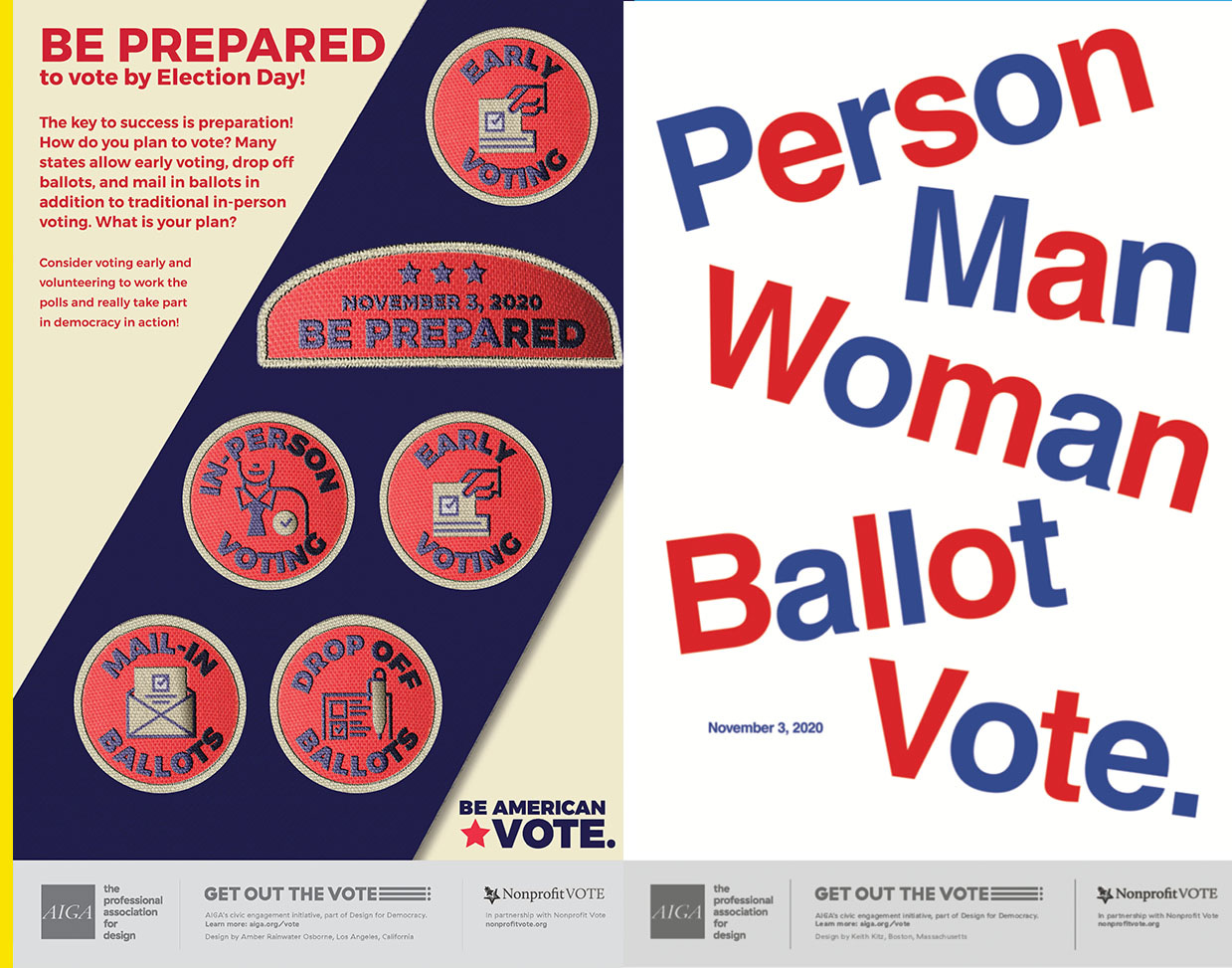
“Be American Vote” by Amber Osborne and “Person Man Woman Ballot Vote” by Keith Kitz
AIGA members can submit their own designs up until Election Day, and you can browse the submissions here and here.




